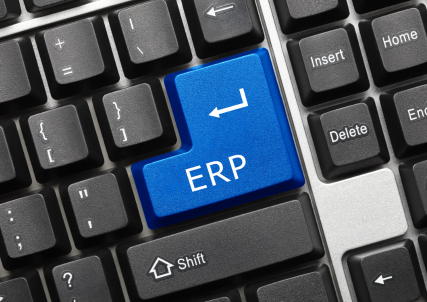Content
Modern systems and ERP functionality can be modular, scalable, and developed from scratch. However, not every business can afford it.
⭐ An alternative for companies can be the use of Open Source Solutions (OSS) platforms, which are gradually growing in popularity among developers and brands of various profiles.
According to some forecasts, the OS ERP market will be worth more than $4.17 billion by 2029. This means even greater penetration of OSS into business infrastructure.
Today, we will consider the features of Open Source ERP, methods of building such solutions, as well as advantages and disadvantages, target user groups, and more.
Briefly About Open Source
Open Source is a type of software solution and platform developed on the basis of the GPL 3 license. This means that they are released and distributed free of charge, have open-source code, and allow any changes to be made to them.
Unlike commercial solutions, project support is provided on a voluntary basis, and development teams can be dynamic, meaning that anyone can contribute to the development of the project.
Thus, a conditional open-source ERP System can be much cheaper than creating a completely new solution and more flexible in terms of upgrades than typical SaaS packages.
Famous Examples of Open Source Solutions
If you still find it difficult to imagine what we are talking about, just take a look at the list of world-famous software and platforms distributed under the GPL 3:
- Linux. This is an operating system that is gaining popularity. As of now, its market share is over 4% and is gradually increasing.
- GIMP. A free graphic editor with powerful functionality and almost unlimited possibilities for modernization.
- Blender. A modern tool for 3D modeling and animation used by studios to create AAA projects.
- PHP. It is one of the oldest and most famous programming languages in the world, which remains popular to this day.
- WordPress. A framework for the development of websites and web applications, in particular, it is known in the commercial industry as a universal solution for creating stores.
- LibreOffice. A powerful office suite that has even been recognized by the German government and started to be actively used in public institutions.
In fact, the list of OSS products is almost inexhaustible, as new solutions for both ordinary users and businesses appear almost every day.
The reason is simple. This segment is not influenced by corporate trends, so it almost always meets the real needs of the audience, not just the next “viral chips”. And this is not the only advantage of Open Source Solutions.
Advantages and Disadvantages of OSS
We cannot claim that open-source ERP or other products and platforms are uncompromising or perfectly balanced solutions by any means.
Instead, we suggest that you take a look at the list of advantages and disadvantages of OSS and evaluate the potential benefits of working with this type of platform for yourself.
Advantages
The main advantage of Open Source is the free distribution model. However, this is only one of the reasons why people choose this type of software. Here are a few more strengths of OSS:
- Security. When working with OSS, you know exactly how, where, and for what purposes your data, network connection, etc. are used.
- Controllability. The solution package can be used as a basis, having “bolted” the necessary functionality to it.
- Scaling potential. OSS has no restrictions on the number of modules and functions.
- Access to technologies. As a rule, platforms are developed on modern frameworks and easily integrate with the cloud, AI, etc.
- The cost of creating and upgrading platforms. All other things being equal, a fully customized product will be cheaper than development from scratch.
So, if you’re looking for a low-cost but powerful enough solution, an Open Source ERP package can be a good fit.
Disadvantages
The only disadvantage is the complexity of the work, as quite often an off-the-shelf product is available online, which has to be reworked from scratch. It is also worth noting that to fully adapt the platform to the needs of the business, you will need the help of experts, which is almost equivalent to the development from a sketch.
OSS Platforms for Building ERP
Well, the theory is over, now let’s take a look at practical examples of popular platforms for build your own ERP system.
Odoo
A highly modular platform with a user-friendly interface and easy-to-use settings. Odoo ERP is considered to be one of the best solutions for businesses with any budget.
Tryton
A flexible system that allows you to customize the platform both in terms of design and functionality. For about two decades, it has been the choice of hundreds or even thousands of companies around the world.
Axelor ERP
A user-friendly and flexible platform with an intuitive interface that covers the needs of virtually all modern business niches. In addition, it can be edited, and custom modules can be added.
xTuple PostBooks
A good option for companies that are in the transition point between small and medium-sized businesses. It has everything you need to make scaling easy and convenient, and managers do not feel the lack of functions.
Building a Project Based on OSS
To understand the inner workings of Open Source ERP Software, we offer you a brief behind-the-scenes look at its creation. The development process is not too different from typical cases and includes identical stages.
Business Analysis
First, a business requires a study to be conducted, a list of priorities is formed, and a roadmap is drawn up. This is the starting point that sets the pace and cost of development.
Building the Architecture
Next, the product structure is formed, i.e., critical modules, platform design, navigation logic, technology stack, and necessary synchronizations, including with the cloud and external databases, are identified.
ERP Build and Customization
The development process sometimes resembles a construction set, when modules and functions are literally “screwed” to the platform, APIs for integration are added, and the application is packaged in a format for a specific OS.
Testing
The finished product is tested on test data and then on real data. We study security algorithms, performance, and the correct synchronization of information between subsystems and modules.
Team Training
Next, we hold a meeting with the staff who will use the ERP and provide in-depth training, supported by a demonstration of practical cases of the system’s use.
Technical Support and Expansion
As a result, the finished platform is deployed on the client’s equipment or in the cloud. Further, under the terms of the cooperation agreement, the product is constantly tested and upgraded.
Who Can Use ERP Based on OSS Platforms?
In short, everyone. However, it is still worth starting from the needs of the business. For example, if you require complete customization of the product, it is still better to develop it from scratch.
If you have a very limited budget and few platform requirements, you can use SaaS or basic OSS.
If you require a solution that you can flexibly customize and upgrade without breaking the bank, then an Open Source ERP is the right choice.
However, it’s up to you to choose. Whatever you select, the AdvantISS team will be ready to implement your project as soon as possible.
Do you have an idea for a project? Contact our manager for a preliminary consultation!




